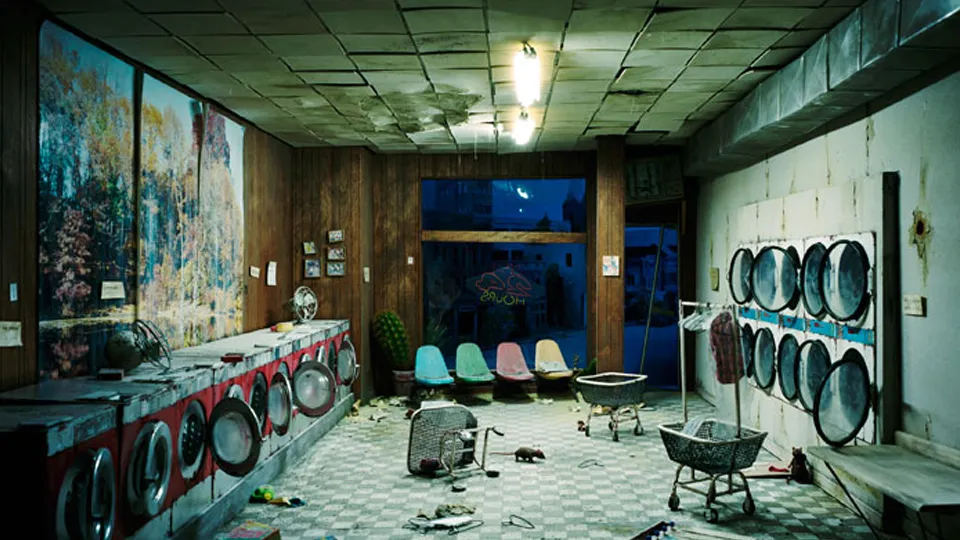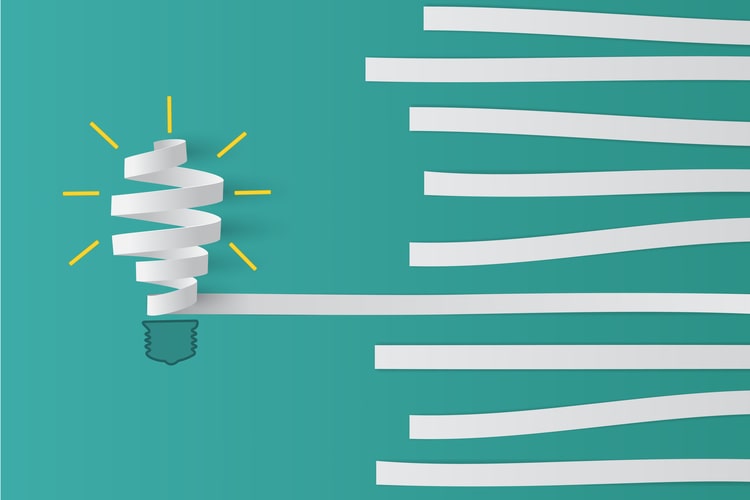In a world constantly shifting between collapse and creation, humanity stands at the crossroads of decay and renewal, where resilience meets innovation.
The landscape of contemporary existence is marked by profound challenges: environmental degradation, economic uncertainty, social fragmentation, and technological disruption. Yet within these spaces of decline and dissolution, something remarkable emerges—the human capacity to imagine, adapt, and rebuild. This journey from decay to renewal isn’t merely reactive survival; it’s an intentional craft of envisioning futures where resilience becomes the foundation and innovation the catalyst for transformation.
🌱 Understanding the Anatomy of Decay
Before we can genuinely appreciate renewal, we must acknowledge the multifaceted nature of decay in our modern world. Decay manifests across various dimensions of human experience, from crumbling infrastructure in once-thriving cities to the erosion of traditional industries that sustained entire communities for generations.
Urban decay presents one of the most visible examples. Abandoned factories, shuttered storefronts, and neglected neighborhoods tell stories of economic shifts that left communities behind. Detroit’s automotive industry collapse, the decline of coal mining regions, and the transformation of manufacturing hubs worldwide illustrate how technological progress and globalization can render entire economic ecosystems obsolete.
Environmental decay operates on a different but equally concerning scale. Climate change, biodiversity loss, soil degradation, and ocean acidification represent systemic breakdowns in the natural systems that sustain life. These aren’t abstract future threats—they’re present realities demanding immediate attention and innovative responses.
The Psychological Dimension of Decline
Perhaps less visible but equally significant is the psychological decay that accompanies material and environmental deterioration. Communities experiencing economic decline often face mental health crises, substance abuse epidemics, and social cohesion breakdown. The loss of purpose, identity, and hope creates invisible wounds that require healing alongside physical reconstruction.
🔄 The Transition Space: Where Decay Meets Possibility
The most fascinating aspect of decay lies not in the decline itself but in the transitional space it creates—a liminal zone where old structures have weakened but new ones haven’t fully formed. This uncertainty, while uncomfortable, becomes fertile ground for reimagination and innovation.
History demonstrates repeatedly that periods of disruption catalyze remarkable creativity. The Renaissance emerged from medieval structures’ collapse. The digital revolution arose from traditional communication systems’ limitations. Contemporary challenges similarly create opportunities for fundamental reimagining of how we live, work, and organize society.
This transition space demands particular mindsets and skills. It requires comfort with ambiguity, willingness to experiment, capacity to learn from failure, and courage to challenge established assumptions. Communities and individuals who navigate decay successfully recognize that renewal isn’t about restoring what was—it’s about creating what could be.
💡 Imagined Futures: The Power of Visionary Thinking
Crafting imagined futures begins with visionary thinking—the capacity to conceive possibilities beyond current constraints. This isn’t escapist fantasy; it’s strategic imagination grounded in understanding present realities while refusing to be limited by them.
Successful future-crafting involves several key elements. First, it requires diverse perspectives. Homogeneous groups tend to imagine futures that replicate existing patterns. Bringing together different ages, backgrounds, disciplines, and experiences generates richer, more innovative visions. Second, it demands systems thinking—recognizing that everything connects to everything else, and isolated solutions rarely address complex challenges.
From Individual Vision to Collective Imagination
While individual visionaries play important roles, sustainable renewal requires collective imagination. Communities must engage in shared future-crafting processes where diverse voices contribute to emerging narratives. These participatory approaches ensure that imagined futures reflect multiple needs, values, and aspirations rather than singular perspectives.
Digital tools and platforms increasingly facilitate this collective imagination. Online collaboration spaces, virtual reality simulations, and interactive modeling tools allow communities to visualize and iterate potential futures together. These technologies democratize the future-crafting process, making it accessible beyond elite planning circles.
🛠️ Resilience: Building Capacity to Navigate Uncertainty
Resilience has become a buzzword, but its genuine meaning extends far beyond simply bouncing back. True resilience involves adaptive capacity—the ability to change, learn, and evolve in response to challenges while maintaining core identity and purpose.
Personal resilience develops through multiple interconnected dimensions:
- Psychological flexibility: The capacity to experience difficult thoughts and emotions without being controlled by them
- Social connections: Strong relationships that provide support, resources, and diverse perspectives
- Purposeful engagement: Clear values and meaningful activities that provide direction during chaos
- Physical wellness: Health foundations that support mental and emotional stability
- Learning orientation: Continuous skill development and knowledge acquisition
Community resilience operates similarly but at collective scale. Resilient communities possess diverse economic bases, strong social networks, adaptive governance structures, and robust infrastructure. They’ve developed redundancy in critical systems, ensuring that single-point failures don’t cascade into community-wide collapse.
The Resilience-Innovation Connection
Resilience and innovation form a symbiotic relationship. Resilience provides the stability and confidence needed for experimental risk-taking, while innovation generates the new approaches that enhance adaptive capacity. Communities stuck in rigid patterns lack resilience; those constantly changing without stable foundations fragment under pressure.
🚀 Innovation as Renewal Engine
Innovation drives the transformation from decay to renewal, but not all innovation serves renewal equally. Extractive innovation—technology that concentrates power and wealth while externalizing costs—may generate short-term gains but ultimately accelerates decay. Regenerative innovation, conversely, creates value while strengthening social, environmental, and economic systems.
Several innovation categories prove particularly powerful for renewal:
Social innovation redesigns relationships, governance structures, and organizational forms. Examples include participatory budgeting processes, cooperative ownership models, restorative justice systems, and community land trusts. These innovations address power dynamics and resource distribution patterns that contribute to decay.
Technological innovation applied thoughtfully can enhance sustainability and equity. Renewable energy systems, circular economy models, precision agriculture, and accessible healthcare technologies demonstrate technology’s potential to address environmental and social challenges simultaneously.
Cultural innovation transforms values, narratives, and identities. Movements promoting sufficiency over excess, connection over consumption, and stewardship over exploitation represent cultural innovations that shift fundamental assumptions about the good life.
🌍 Real-World Examples of Decay-to-Renewal Transformation
Abstract concepts become tangible through concrete examples. Numerous communities worldwide demonstrate what decay-to-renewal transformation looks like in practice.
Medellín: From Violence to Innovation Hub
Once considered the world’s most dangerous city due to drug cartel violence, Medellín, Colombia, transformed itself through intentional, innovation-focused renewal. The city invested heavily in public transportation connecting marginalized hillside neighborhoods to economic opportunities, built library parks in underserved areas, and created social programs addressing root causes of violence. Today, Medellín receives recognition as an innovation and social enterprise hub, demonstrating how comprehensive, equity-focused approaches can catalyze remarkable transformation.
Detroit: Industrial Decline to Urban Innovation Laboratory
Detroit’s automotive industry collapse left vast stretches of abandoned buildings and depopulated neighborhoods. Rather than simply mourning what was lost, innovators saw opportunity. Urban agriculture initiatives transformed vacant lots into productive farms. Artists and entrepreneurs acquired abandoned buildings affordably, creating studios, galleries, and new businesses. Community organizations developed innovative governance and resource-sharing models. While challenges remain, Detroit exemplifies how decay creates space for experimentation that wouldn’t be possible in fully functioning systems.
Freiburg: Sustainability as Renewal Strategy
Freiburg, Germany, responded to environmental challenges and energy vulnerability by becoming a sustainability pioneer. The city developed extensive cycling infrastructure, stringent energy efficiency standards, and solar technology clusters. These environmental innovations generated economic development, attracted talent, and enhanced quality of life, demonstrating how ecological renewal drives broader community transformation.
📊 Measuring Renewal: Beyond Traditional Metrics
Crafting imagined futures of resilience and innovation requires new measurement frameworks. Traditional economic indicators like GDP fail to capture many dimensions of genuine renewal, sometimes rewarding activities that undermine long-term wellbeing.
Alternative measurement approaches increasingly gain traction:
| Measurement Framework | Focus Areas | Key Advantage |
|---|---|---|
| Genuine Progress Indicator | Economic activity adjusted for social and environmental costs | Distinguishes growth from progress |
| Thriving Cities Index | Physical, social, and psychological wellbeing factors | Holistic community health assessment |
| Doughnut Economics Model | Meeting human needs within planetary boundaries | Balances social foundations and ecological ceiling |
| Community Resilience Index | Adaptive capacity across multiple systems | Assesses ability to navigate disruption |
These frameworks share common characteristics: multidimensional perspectives, inclusion of qualitative factors, attention to distribution and equity, and long-term orientation. They help communities track whether changes genuinely represent renewal or merely shift problems elsewhere.
🎯 Practical Strategies for Individual Engagement
While community-level transformation requires collective action, individuals play crucial roles in decay-to-renewal processes. Personal engagement strategies include:
Skill development for uncertain futures: Cultivate diverse, adaptable capabilities rather than narrow specialization. Learn practical skills like food production, repair, and making alongside cognitive and social competencies. This versatility enhances personal resilience while contributing to community capacity.
Participation in renewal initiatives: Join or support projects addressing local challenges—community gardens, tool libraries, skill-sharing networks, neighborhood improvement groups. These initiatives build social capital while creating tangible improvements.
Conscious consumption choices: Support businesses and products aligned with regenerative principles. This isn’t about consumer perfection but directional choices that, aggregated across many individuals, shift market signals and resource flows.
Narrative contribution: Share stories of renewal, possibility, and innovation. Counter dominant narratives of inevitable decline with evidence of creative adaptation and transformation. This narrative work shapes collective imagination and sense of possibility.
🌟 The Role of Hope in Renewal Processes
Hope deserves special attention in decay-to-renewal journeys. Not naive optimism that ignores genuine challenges, but active hope—hope based on engagement rather than wishful thinking.
Active hope involves four dimensions. First, appreciating current reality honestly, including painful truths about decay and damage. Second, identifying possibilities and resources for positive change. Third, taking action aligned with desired futures rather than waiting for certainty. Fourth, engaging with others to amplify individual efforts through collective power.
This hope proves essential because renewal processes rarely follow linear paths. Setbacks, failures, and unexpected obstacles inevitably arise. Without hope grounded in purpose and community, these challenges can trigger abandonment of renewal efforts precisely when persistence matters most.
🔮 Emerging Frontiers in Resilience and Innovation
As we look toward future possibilities, several emerging areas show particular promise for accelerating renewal:
Biomimicry and regenerative design: Learning from natural systems’ 3.8 billion years of evolutionary problem-solving offers profound insights for human innovation. Designs that create conditions conducive to life, rather than merely minimizing harm, represent a fundamental shift in how we approach development.
Distributed systems and local autonomy: Technologies enabling decentralized energy production, manufacturing, and governance increase community resilience by reducing dependence on vulnerable centralized systems. This trend toward distributed capacity reverses century-long centralization patterns.
Intergenerational collaboration: Bringing together elders’ wisdom, working-age adults’ resources, and young people’s innovation creates powerful renewal dynamics. Age-integrated approaches generate more comprehensive, sustainable solutions than age-segregated perspectives.
Contemplative practices and inner resilience: Recognition grows that outer transformation requires inner development. Mindfulness, meditation, and other practices that cultivate awareness, emotional regulation, and psychological flexibility increasingly integrate into renewal initiatives, acknowledging that sustainable change emerges from transformed consciousness, not just altered circumstances.
💫 Weaving Resilience Into Daily Life
The most profound renewals aren’t dramatic singular events but accumulations of small, consistent choices that gradually reshape reality. Integrating resilience and innovation into daily rhythms makes renewal sustainable rather than episodic.
This integration manifests through simple practices: maintaining learning routines that expand capabilities, nurturing relationships that provide support networks, engaging with neighborhood improvement efforts, supporting local businesses and producers, reducing waste and resource consumption, participating in civic processes, and sharing skills and knowledge with others.
These practices seem modest individually but create powerful collective impact when widely adopted. They weave resilience into community fabric, making it institutional rather than heroic—part of ordinary life rather than extraordinary response.
The journey from decay to renewal isn’t optional—change constantly occurs whether we engage intentionally or not. The question isn’t whether transformation happens but whether we participate consciously in shaping its direction. By crafting imagined futures grounded in resilience and innovation, we transform from passive observers of decline into active creators of possibility. This shift from resignation to agency, from victimhood to authorship, represents the essential first step in any genuine renewal. The futures we need won’t arrive fully formed—we must imagine, build, and inhabit them together, one choice, one project, one community at a time.
Toni Santos is a visual explorer and microscopic storyteller who delves into the hidden aesthetics of microbial life. Through a fusion of scientific curiosity and artistic insight, Toni transforms the overlooked world of bacteria, fungi, and cellular forms into mesmerizing visual narratives—revealing the elegance, symmetry, and chaos that thrive at microscopic scales.
Rooted in a fascination with life forms too small to see yet too intricate to ignore, Toni’s work captures the bizarre beauty of microbial colonies, biofilms, and spore patterns. These images aren’t just representations—they are celebrations of the artistic intelligence encoded in nature’s tiniest architects.
With a background in visual design and bio-inspiration, Toni merges scientific imaging techniques with creative expression, transforming petri dish cultures, fluorescence microscopy, and microbial textures into works that provoke both wonder and contemplation.
As the creative force behind Vizovex, Toni offers curated visual studies, microbial-inspired designs, and essays that bridge art and microbiology—inviting viewers to reimagine what beauty means at the edge of perception.
His work is a tribute to:
The hidden geometries of living systems
The surprising elegance of microbial growth
The role of micro-life in shaping visual culture
Whether you’re a scientist, artist, or simply curious about the unseen world that sustains us, Toni opens a window into a universe where life writes poetry in colonies and patterns, one microbe, one frame, one breathtaking detail at a time.





